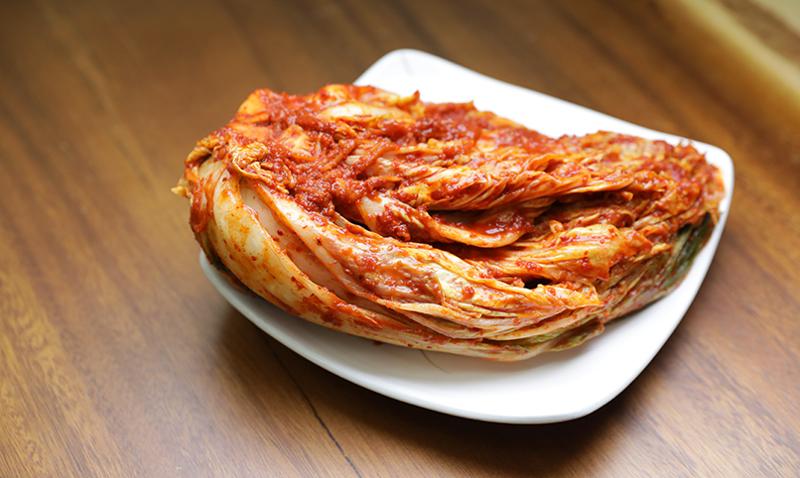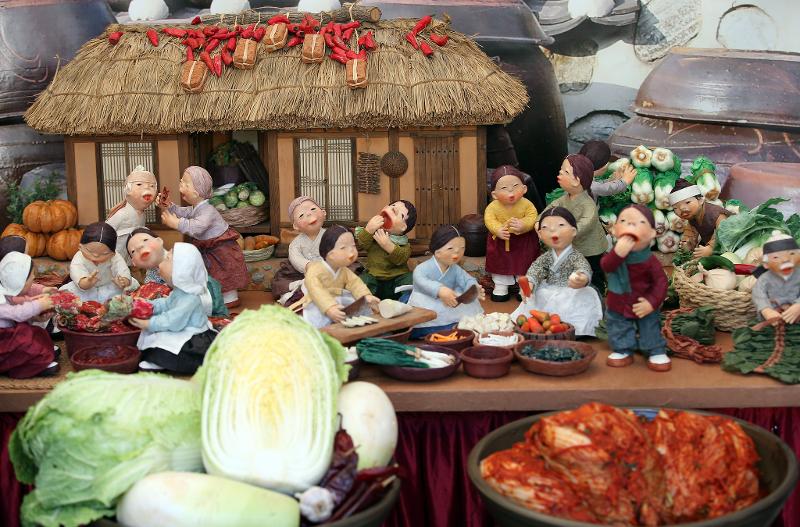By Lee Kyoung Mi and Lee Jihae
Photo and video = Kim Sunjoo
Seoul | Dec. 4, 2020
Amid the arrival of the cold winter, stores and discount grocery chains are stockpiling cabbage and radish. This means kimjang (making kimchi) is just around the corner.
I asked myself whether I should try my hand at kimjang, so I looked online for a kimjang kit with which I could conveniently smear salted cabbage with seasoning. Some packs had 1 kg of kimchi while others had up to 28 kg. Some 100 types of seasoning included those from the country's central and southern regions. I ordered what I thought was most suitable, a 3.5-kg pack of kimchi.
The kit arrived within a day since I ordered it online. As I excitedly opened the Styrofoam box, I could smell the piquant scent. The kimchi seasoning was tightly packed to prevent leaking and the salted cabbage was wrapped with an ice pack. All that was needed were rubber gloves and a basin to smear the seasoning on the cabbage. The guidelines said the salted cabbage should be turned sideways to dry for three to four hours, but slightly squeezing the cabbage with hands was sufficient.
I began kimjang with Elias Molina, a colleague from Costa Rica. I've lived in Korea all my life and Molina for a decade, but we were both doing this for the first time. We divided the cabbage in half and each worked on our parts. We applied seasoning on the cabbage and thought to ourselves, "I hope this turns out good." The seasoning comprised chili powder, garlic, salted anchovies, pickled shrimp and shredded radish. The green cabbage soon turned red from the red reasoning in a process of under ten minutes.

This kimchi was made this day, looking so delicious in its red marinated appearances. I feel a stronger connection to it because I made it myself.
After we finished, we held the kimchi like an infant and neatly put it in a kimchi box; it was enough for one person throughout winter. A 1-kg box of kimchi at a discount grocery chain is usually KRW 10,000-15,000. We made 3.5 kg of kimchi for KRW 25,000 and experienced kimjang, so we killed two birds with one stone.
"It was easier than I expected and tasted better than the kimchi sold at discount grocery chains," Molina said.
The finale of kimjang is eating the freshly made kimchi with boiled pork slices. We took out slices of the meat that I prepared from early that morning and laid them out with the kimchi we made. It looked as good as any bossam (sliced pork dish) served at a restaurant. I grew confident in my kimjang ability and thought about doing it alone next year.

Kimjang (making kimchi) is traditionally an important annual event in Korea, though the rise in the number of single and double-income households and COVID-19 have changed the domestic culture of making kimchi. (Korea.net DB)
More people are using salted cabbage or kimjang kits to make kimchi due to COVID-19. Market Kurly, an online shopping platform, said the number of kits it sold from Nov. 4-30 this year shot up 405% from the same period last year. Sets for two-person households accounted for 59% of all kit sales.
"As people are eating more at home due to COVID-19, demand for kimchi has grown," the company said. "Instead of making kimchi on a large scale, more people are making just enough for their families, and that has fueled a positive response toward kimjang kits."
"The expenses for kimjang kits are about 23% less than those for typical kimjang. Consumer satisfaction over the financial cost is thus high."
The Korea Rural Economic Institute (KREI) last month released its forecasts for those intending to do kimjang this year and demand for related vegetables. The study said 51.9% preferred salted cabbage while 41.5% opted for fresh cabbage, with the majority 91.7% of those picking salted cabbage citing "the cumbersome process of cabbage salting" and "time saving" as reasons.
km137426@korea.kr